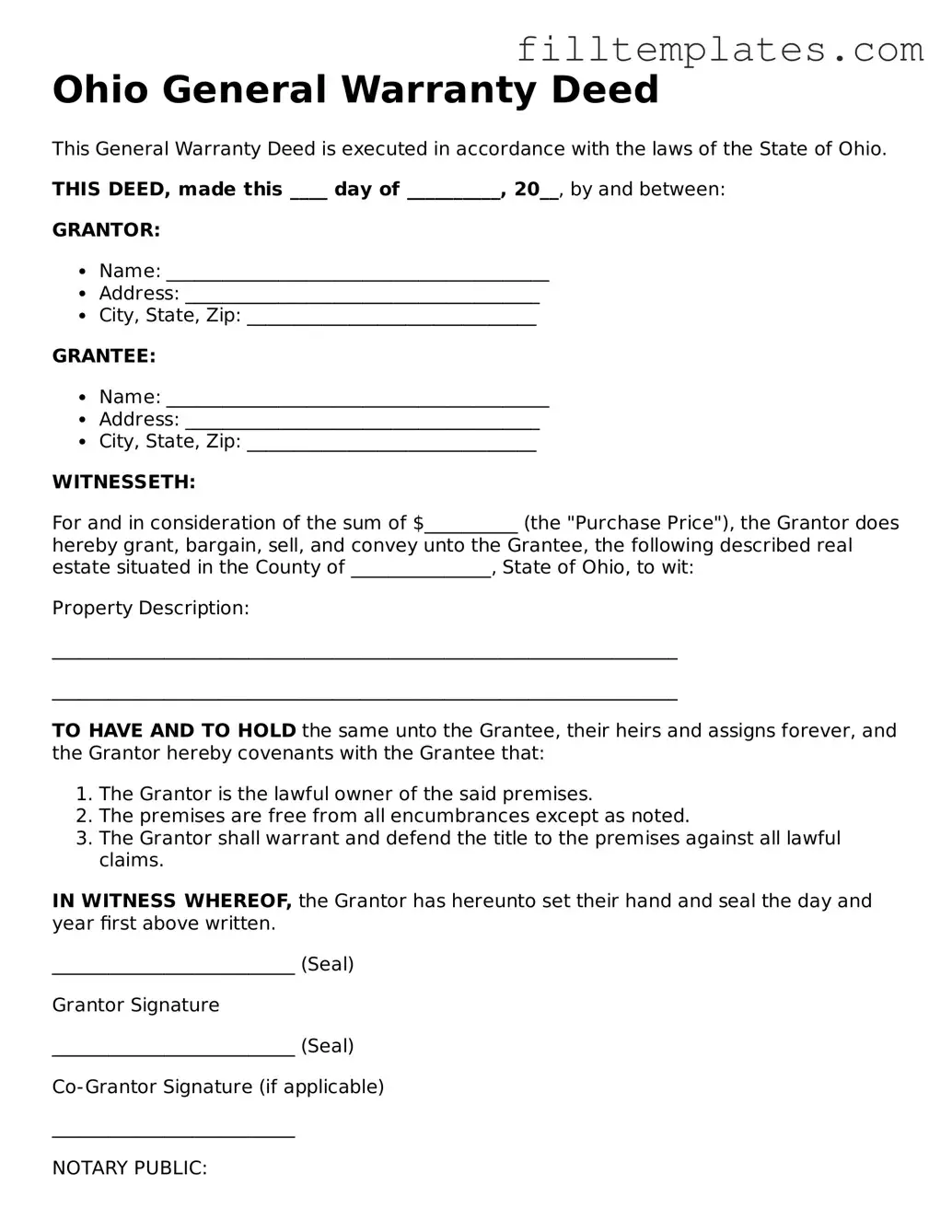Ohio General Warranty Deed
This General Warranty Deed is executed in accordance with the laws of the State of Ohio.
THIS DEED, made this ____ day of __________, 20__, by and between:
GRANTOR:
- Name: _________________________________________
- Address: ______________________________________
- City, State, Zip: _______________________________
GRANTEE:
- Name: _________________________________________
- Address: ______________________________________
- City, State, Zip: _______________________________
WITNESSETH:
For and in consideration of the sum of $__________ (the "Purchase Price"), the Grantor does hereby grant, bargain, sell, and convey unto the Grantee, the following described real estate situated in the County of _______________, State of Ohio, to wit:
Property Description:
___________________________________________________________________
___________________________________________________________________
TO HAVE AND TO HOLD the same unto the Grantee, their heirs and assigns forever, and the Grantor hereby covenants with the Grantee that:
- The Grantor is the lawful owner of the said premises.
- The premises are free from all encumbrances except as noted.
- The Grantor shall warrant and defend the title to the premises against all lawful claims.
IN WITNESS WHEREOF, the Grantor has hereunto set their hand and seal the day and year first above written.
__________________________ (Seal)
Grantor Signature
__________________________ (Seal)
Co-Grantor Signature (if applicable)
__________________________
NOTARY PUBLIC:
State of Ohio, County of ___________
On this ____ day of __________, 20__, before me, a Notary Public in and for said County, personally appeared _______________, known to me to be the person(s) whose name(s) are subscribed to the within instrument and acknowledged that they executed the same.
My Commission Expires: _____________
__________________________
Notary Public Signature
